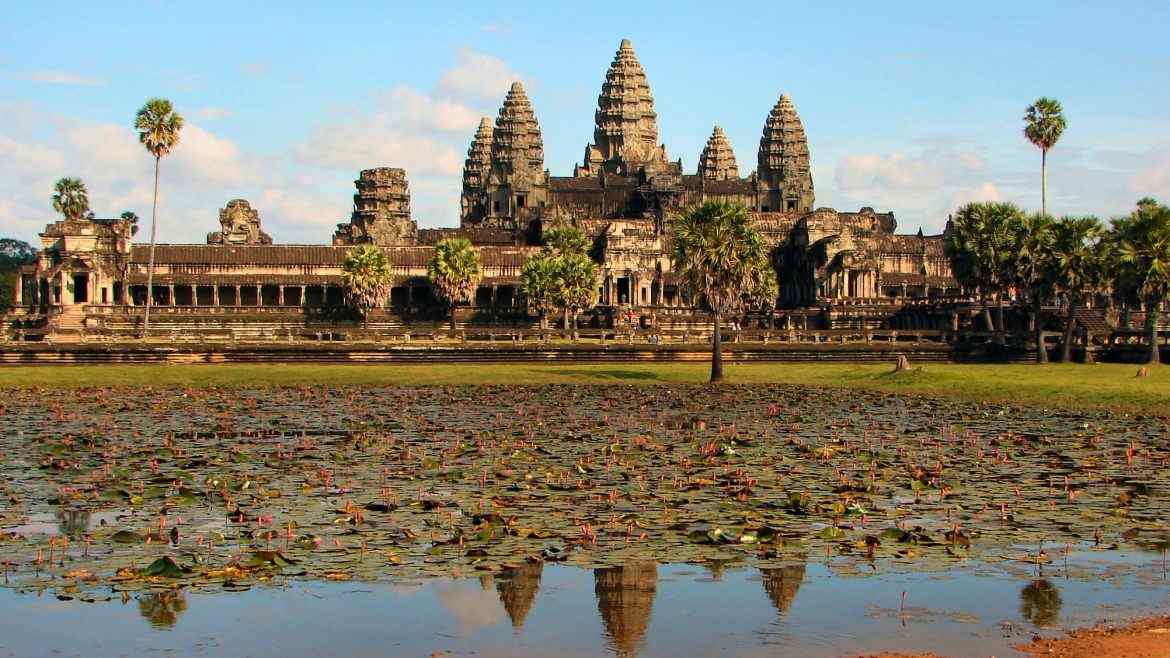Ista Bruneina Nurul Iman, Bandar Seri Begawan
One of the best structural wonders, the Palace of Brunei Sultan is straight out of fantasies. The Istana Nurul Istana Nurul or ‘Royal residence of Light and Faith’ contains more than 1788 rooms, dinner lobby for 5000 people, 1500 limit mosque, a 110-vehicle carpark, 5 pools and naturally cooled stables for horses.
Petronas Towers, Kuala Lumpur, Malaysia
The 88 floors of the Petronas Towers, planned in a “M” shape to speak to Malaysia, rise 452m into the Kuala Lumpur sky, associated by the elevated cross-building bridge, arranged between the 41st and 42nd floors. In spite of the fact that you can stroll over the scaffold and take in some confounding perspectives, it was really intended to prevent the towers from breaking during high breezes.
Angkor Wat, Angkor, Cambodia
Built in the mid-twelfth century by the Khmer King Suryavarman II, Angkor Wat is the biggest religious landmark on the planet. In the late thirteenth century, the sanctuary progressively moved from Hindu to Buddhist use, as it is as yet used right up ’til today. So vital is this humongous sanctuary to Cambodian history that it shows up on the national flag.
La Pedrera, Barcelona, Spain
A condo square like no other, Casa Milà is known as La Pedrera (“The Quarry”) because of its undulating stone outer, that twists its way around the structure. Gaudí’s creative emphasis is incorporated in the underground vehicle parking and a practically corner less inside, in which everything from the dividers to the bed-handles is curved, giving the structure a remarkable, captivating ease.
Borobudur, Java, Indonesia
The world’s biggest Buddhist sanctuary was worked over a thousand years prior in the Kedu Valley, Java. The intricate development was intended to take pioneers on an excursion through kamadhatu (the universe of wants), seen by the sanctuary’s base, rupadhatu (the universe of structures), seen by the five square patios and arupadhatu (the indistinct world), seen by the three roundabout stages and stupa.
Territory 67, Montréal, Canada
Territory 67 was a progressive lodging idea intended for the Montréal Expo ’67 by Israeli–Canadian planner Moshe Safdie. Contained 354 indistinguishable solid units organized over one another, the advancement maintained the idea of single-family downtown dwelling, yet in addition got the advantages of rural living, wherein each residence has open air space, outside air and security.
Atomium, Brussels, Belgium
Worked for Expo ’58, standing 102m high and with nine associated tempered steel circles, the Atomium structures the state of a cell of an iron amplified 165 billion times. Made to symbolize harmony among countries, confidence in logical scientific advancement and a positive vision of things to come, the odd-looking development is presently one of Brussels’ most famous structures.
Sydney Opera House, Sydney, Australia
Structured by Danish planner Jørn Utzon, Sydney’s most unmistakable milestone and one of the most particular structures of the twentieth century, the Opera House opened in 1973 after a spend of AUS$102 million – multiple times over spending plan. The structure’s “sails” were developed utilizing three pinnacle cranes made in France explicitly for the Opera House, costing AUS$100,000 each. This article is written by Faculty of Architecture(FoA), KAHE. If you like this article, gives it a thumbs up, share it with your friends and share your thoughts on the comments section below!






